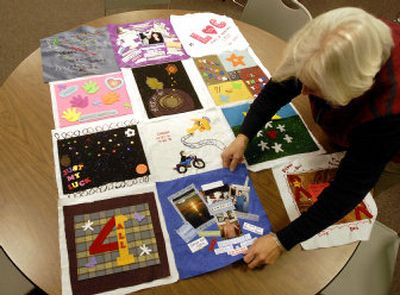Unlikely AIDS victim says no one risk-free

Her risk was so low, even the doctor didn’t test for HIV infection. But the North Idaho grandmother was sick just the same.
She finally found out what was wrong a year ago, when her husband of nearly three decades confessed that he’d been having sex with men for years.
He had AIDS, he said. And when the correct test finally came back, she learned she did, too.
“It was a complete surprise to me,” said the woman, who asked to remain anonymous because her boss and her mother still don’t know.
“I had never had sex with anyone but him in my life.”
The devastation was compounded, she said, because she didn’t think it could happen to her.
“I’m a plump, middle-age woman,” she said. “Long-term marriage, professional, intelligent, a person of faith. I was absolutely what you think is the lowest risk factor in the population.”
But that’s the irony of HIV and AIDS infection a quarter-century after the disease was first identified, advocates and health officials said.
If there were one message to stress today, World AIDS Day, they said it would be that there is no typical victim, no certain lifestyle, no common geography for the illness that now affects more than 1 million people in the United States and an estimated 36.8 million worldwide.
“I think people still think it’s out there, it’s not here,” said Linda Michal, who heads the board of the North Idaho AIDS Coalition, based in Coeur d’Alene. “But this isn’t just people in San Francisco, New York or Florida.”
Between 750 and 1,250 HIV-infected people live in Spokane County, and nearly 50 reside in North Idaho, advocates said.
Though the numbers are small compared with other regions, the impact of the illness here mirrors trends elsewhere. The disease is being diagnosed more frequently in newer categories of people, including women and young adults, said Christopher Zilar, a health program specialist with the Spokane Regional Health District.
People under age 25 now make up about half of two dozen new cases of HIV infection seen in Spokane each year. Most of those are in people ages 20 to 22.
“If you have unprotected sex and/or borrow used needles, you put yourself at risk for HIV infection,” Zilar said.
Even more alarming, the young people don’t seem to recognize the seriousness of the disease.
“I have personally heard from young people who state they think there is a ‘morning after pill’ for HIV, which there is not,” Zilar said. “… If people lack concern about HIV, does it make them more likely to engage in high-risk behaviors?”
Women make up about 20 percent of Spokane County HIV and AIDS cases, which include nearly 500 people diagnosed since 1984. Between 20 percent and 30 percent of the new cases identified each year are women, Zilar said.
Women also account for a third of the HIV cases in Idaho, said Dani Mahoney, executive director of the advocacy agency.
“Women are at risk in general,” Mahoney said. “Most of them are contracting it through heterosexual contact.”
That was the case with the North Idaho grandmother, who said she had long had suspicions about her husband’s sexuality. But he denied any accusations.
“I just chose to believe him,” the woman said.
When he finally admitted the truth in October 2005, her reaction wasn’t rage, but relief.
“I was relieved that he had finally told me the truth,” she said. “To live with a liar, you never know what’s real. … It’s very hard to come to terms with who he is compared to who I thought he was.”
The woman had been sick for some time with unexplained fevers, rapid weight loss and general illness.
After her diagnosis, she was placed on eight different medications that she’ll likely take for the rest of her life. She has health insurance to pay for them, but the co-payments run $250 a month.
Still, an AIDS diagnosis is not the death sentence it once was, said the woman, who regards the disease as a “chronic, manageable disease.”
In fact, during this whole ordeal, the worst moments weren’t when her husband admitted his double life, or even when the test results were returned.
Instead, it was last summer, months after she learned she was ill, when the woman realized that her grown children might have been exposed.
“It hit me that my kids had lived with us when we were infected,” she said. “What if I dressed a wound and infected one of them? That was horrible.”
Fortunately, none of the children tested positive for HIV infection, the woman said.
A year after the devastating revelation, the woman is slowly pulling her life together. She’s divorced now and unsure where her former husband lives. She had to sell the family home and move because she could no longer afford the cost. She said she was fired from her retail job last year, a week after she confided in her boss about her illness.
She’s found a new job now, and a new place to live. She works hard to maintain a positive attitude, to avoid the sorrow and self-pity that would be easy to indulge.
“I am striving not to be bitter,” said the woman, who regards her former husband as mentally ill.
She wishes now that she would have heeded her hunch about her husband’s sexual behavior and that she would have sought medical help sooner. She said she’s telling her story as a warning to others.
“I just want people to take the time to be tested,” she said. “Just do it for yourself. No one else has to know.”